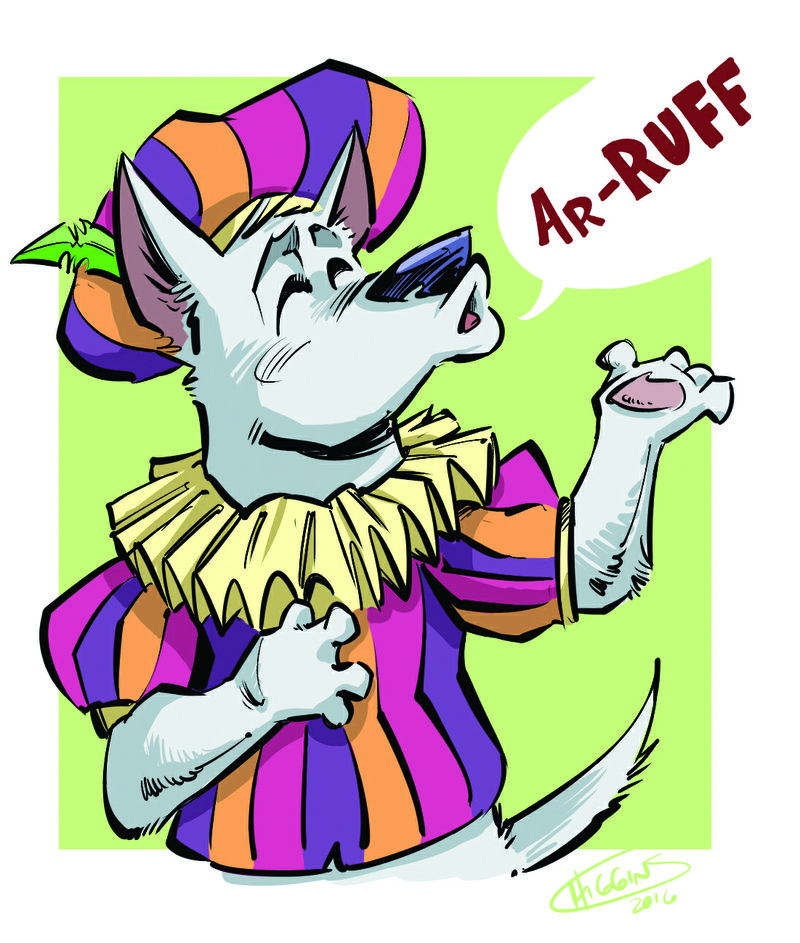A dog on our block is outside in his yard a lot and he barks all the time. My wife said he barks because he's bored and she can tell because it's a slow, steady bark. I don't doubt her. She also said dogs have a lot of different sounding barks that mean other things. What are some other kinds of barks?
Dogs communicate in many ways -- body language, tail wagging, head tilts, ear position -- but barking definitely gets the most attention. While some dogs sound off more than others, they all have a repertoire of barks they use to express themselves.
Variations in pitch and repetition are the two main dimensions to a dog's barking, Stanley Coren says in his book The Intelligence of Dogs. A Canadian psychologist who writes about dogs for Psychology Today, he says in the book that low-pitched sounds can mean a dog is communicating anger, a threat or the possibility of aggression. High-pitched sounds often mean a dog is fearful or in pain, although high-pitched sounds that are less sharp also can convey when a dog is excited or wants to play.
How often the barking sound is repeated also helps people interpret what a dog is trying to say. Continuous rapid barking in a midrange pitch, for example, might signal there's an emergency or danger afoot: "Timmy's in the well!" or "Intruder alert!"
Professional dog trainer Pat Miller says it's helpful for owners to know how to interpret their dog's barking, especially when trying to determine how to respond to it. In her book, Do Over Dogs: Give Your Dog a Second Chance for a First Class Life, Miller explains types of barks and how to identify them. Here's a look at barks as categorized by Miller and Coren.
Alarm or alert barks: This is the continuous rapid barking described by Coren that Miller says can be in response to a real danger such as a fire or even an intruder in the house or yard. Sometimes, however, it might mean merely the dog can see someone strolling on the sidewalk through the picture window. My Pomeranian's daily episode of alert barking always told me that the mail carrier was on the front porch.
Coren describes a second type of alarm barking that's ongoing, but a bit slower and lower in tone. This means danger is nearby, such as someone unfamiliar lurking outside the fence. Barking rapidly in strings of three or four with pauses in between means there's the possibility of a threat and someone needs to check it out. For my dog, that bark indicated the mail carrier was nearby, usually on the street in front of the house.
Demand barking: Miller describes this as barking to get attention, which is probably an easy bark for dog owners to understand. This might start as a grumble, maybe a yip, then escalate to insistent loud barking if the dog thinks he's being ignored. My dog sometimes did this when she thought I was working and she wanted to play. The bark was the vocal equivalent of foot stomping.
Boredom barking: This is the sound of a dog that has been left alone in a yard all day or all night, Miller says. A bored dog will bark continuously and monotonously -- or slow and steady like the dog you've been hearing in your neighborhood. Coren describes the boredom bark as prolonged and incessant with moderate to long intervals between each sound.
Play barking: This is a happy sound, although it can be nerve wracking if it goes on and on. With my dog, the play bark was a quick woof accompanied by a play bow (front legs down on the floor, hind end in the air). Coren calls the play sound a stutter bark with a midrange pitch.
"If a dog's bark were spelled 'ruff,' a stutter bark would be spelled 'ar-ruff,"' he says.
Family on 09/28/2016
